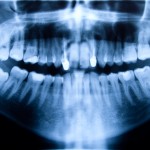
Third molar removal is a common surgical procedure that is often associated with pain swelling trismus and functional limitation. Anti-inflammatory drugs are often used to reduce these complications, but they can cause side effects such as gastro-intestinal irritation of bleeding or allergic reactions. In recent decades photobiomodulation or low-level laser therapy has been suggested as a way of reducing inflammation and enhancing healing for a range of conditions including pain swelling and trismus following third molar surgery. While some studies have suggested potential reduction in post-operative morbidity following third molar surgery other have not.
The aim of this review was to investigate the effects of photobiomodulation (PBM) on pain, oedema, and trismus following the extraction of impacted mandibular third molars.
Methods
The review protocol was registered in the PROSPERO database. Searches were conducted in the Medline, Embase, Cochrane Database of Systematic Reviews, Scopus, Web of Science, Latin American and Caribbean Health Sciences (LILACS), Brazilian Library of Dentistry (BBO), SciELO, LIVIVO, Epistemonikos, OpenGrey, Clinical Trials, WHO Primary Registries and COPAC databases with no restrictions on language or year of publication. Randomised controlled clinical trials (RCTs) investigating the effects of PBM with laser in adult patients (> 18 years of age) undergoing extraction of impacted mandibular third molars were considered. No restrictions were imposed regarding the laser application method. Two reviewers independently selected the studies and extracted data with risk of bias being assessed using the Cochrane risk of bias tool (RoB2) The primary outcomes were pain, oedema, and trismus. A random effects meta-analysis was conducted, and the Grading of Recommendations Assessment, Development and Evaluation (GRADE) approach used to assess the certainty of the evidence.
Results
- 33 studies involving a total of 1,347 patients (56.6% female, 4% male) were included.
- 30 studies were considered to be at high risk of bias and 3 to have some concerns.
- 23 studies contributed to the meta-analyses.
- Pain was lower in the PBM group compared to control on days, 1,2,3, and 7 (see table below).
| Post-op Pain | No. of studies | SMD (95%CI) | GRADE Certainty of evidence |
| Day one | 11 | -0.70 (-1.03 to -0.37) | Low |
| Second day | 13 | -0.56 (-0.70 to -0.34) | Low |
| Third day | 7 | -1.09 (-1.63 to -0.55) | Low |
| Seventh Day | 15 | -0.71 (-1.04 to -039) | Low |
- There was a greater reduction in oedema at day 2 in the PBM group but no significant difference at day 7 (see table below).
| Post -op Oedema | No. of studies | SMD (95%CI) | GRADE Certainty of evidence |
| Second day | 11 | -0.61 (-1.09 to -0.13) | Low |
| Seventh Day | 11 | -0.26 (-0.84 to 0.32) | Very low |
- There was no difference in PBM and control groups for trismus on either the second or seventh day (see table below).
| Post -op Trismus | No. of studies | SMD (95%CI) | GRADE Certainty of evidence |
| Second day | 11 | 0.42 (-0.32 to 1.16) | Very low |
| Seventh Day | 11 | 0.48 (0.00 to 0.96) | Very low |
Conclusions
The authors concluded: –
The evidence of the effect of PBM regarding the control of pain, oedema, and trismus following third molar extractions is low or very low.
Comments
The authors registered their protocol with PROSPERO and searched a broad range of databases. Thirty-three RCTs were included in this new review compared with the 17 included in an earlier review by Doman et al (Dental Elf – 15th Mar 2021) with 10 of 17 studies from the Domah review included in this latest review. Both parallel and split-mouth studies were included which may have implications for the analyses in addition none of the included studies was assessed as being at low risk of bias with all but two of the studies being considered to be at high risk of bias. Twenty-three studies contributed to the meta-analyses with the findings suggesting some benefits for PBM in relation to pain and swelling. However, the authors calculated that a minimally important clinical difference for the patient would occur with an SMD of < 0.8 or > 0.8 which was not achieved. As the authors note well designed and reported randomised controlled trials of appropriate sample sizes are needed to improve the quality of evidence on this topic.
Links
Primary Paper
Lacerda-Santos JT, Granja GL, Firmino RT, Dias RF, de Melo DP, Granville-Garcia AF, Martins CC. Use of Photobiomodulation to Reduce Postoperative Pain, Edema, and Trismus After Third Molar Surgery: A Systematic Review and Meta-Analysis. J Oral Maxillofac Surg. 2023 May 23:S0278-2391(23)00468-8. doi: 10.1016/j.joms.2023.05.007. Epub ahead of print. PMID: 37290483.
Other references
Dental Elf – 14th Mar 2022
Third molar surgery – Er:Yag lasers and post-operative problems
Dental Elf – 15th Mar 2021
Third molar surgery: Does low-level laser therapy reduce post-operative morbidity?
